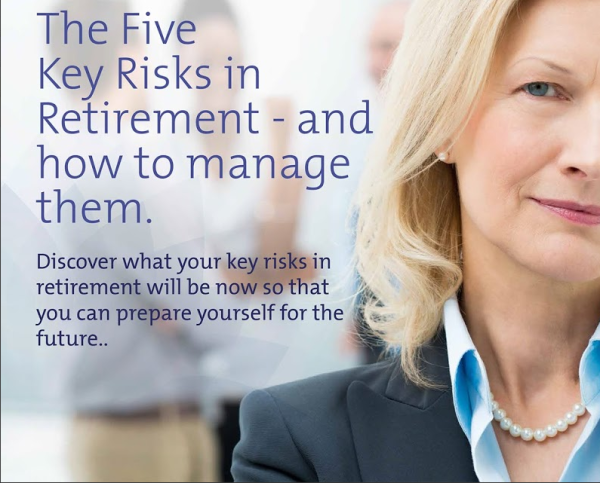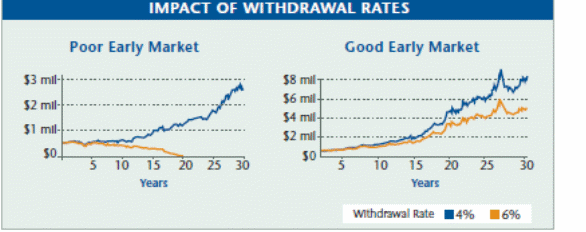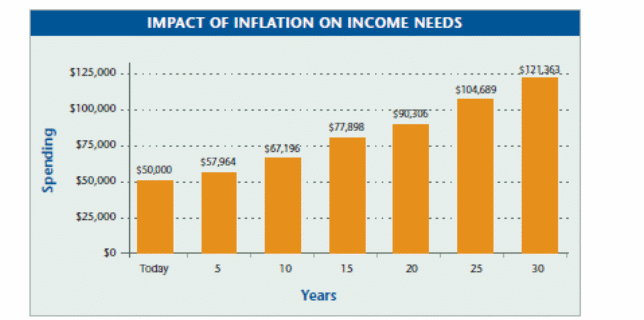Discover what your key risks in retirement will be now so that you can prepare yourself for the future.
Understanding risks you may face in retirement has never been more important. The days of relying solely on pension plans and the state scheme to meet retirement income needs are in the past. What’s more, employer-provided private health coverage may not be available in retirement, people are living longer and have more debt than previous generations and many wish to help children and grandchildren, providing further strain on finances. As a result, developing a personal retirement income plan has even more importance.
Shifting from Saving to Receiving Income
During your working years, your focus was saving for retirement. In retirement, your focus shifts to creating a plan to withdraw income from savings to support your spending needs. You may reduce your risk of running out of savings during retirement by understanding and planning for five key retirement income risks:
-
Longevity. Average life spans are increasing, so your retirement savings may need to last longer than expected.
-
Market performance. Poor market performance early in your retirement can significantly impact how long your savings will last.
-
Withdrawal rate. Withdrawing too much can deplete your savings too quickly.
-
Inflation. Your annual income needs could more than double over the course of your retirement.
-
Long term care. Costs for providing for care in your later years are expected to increase at a faster pace than inflation.
Retirement Risk #1 : Longevity
Plan for a Long Life
Improved healthcare may extend your life, but living longer could also increase your expenses as you have to pay for a longer retirement. To help ensure your savings last as long as you live, keep the following in mind:
-
Assume your savings need to last longer than the average life expectancy.
-
Consider that you could live 30 years or more in retirement.
-
If you’re married, studies show that you could live longer than those who aren’t.
Retirement Risk #2: Market Performance
and
Retirement Risk #3: Withdrawal Rate
Monitor Market Performance and Control Spending
Market performance and withdrawal rate can greatly impact how long your savings may last — particularly if the market performs poorly in the early years of your retirement. The charts below show how savings are affected by two different withdrawal rates in two different market scenarios. Each scenario starts with £500,000 and has a 10.74% average return over time. Although the average return is the same, the specific timing of the poor investment returns is a major factor in the results.
-
The first chart shows a poor early market. At a 6% withdrawal rate, savings ran out in 20 years. On the other hand, at a 4% withdrawal rate, savings lasted more than 30 years.
-
The second chart shows a good early market. Savings lasted more than 30 years at both 4% and 6% withdrawal rates.
-
Many financial professionals suggest withdrawing 4 to 5% or less, adjusted for inflation.
Retirement Risk #4: Inflation
Maintain Your Purchasing Power
Inflation is the general and progressive increase in prices over time. Let’s say you need £50,000 a year to live at retirement. If inflation runs at 3% a year, you’ll need more than £100,000 a year in 25 years to maintain the same standard of living.
The example above is for illustrative purposes only and assumes a 4% annual rate of inflation and annual retirement expenses of £50,000 at the start of retirement.
Retirement Risk Number 5 – Long Term Care costs
The average cost to provide a room with nursing care in a care home is almost £40,000 a year, much more if you are in London or the South East. If you have savings of more than £23,350 you won’t qualify for any financial assistance.
As the average stay in a care home is over four years and one in eight residents will live there for over seven years, the costs can mount up and dramatically affect your wealth in retirement.
Next Steps… Creating a Plan
Now that you know more about the five key risks, its time to create a retirement income plan. A good retirement planning specialist will help you:
-
Determine how much money you need in retirement to cover your lifestyle expenses.
-
Identify all income sources and assets available to help you fund your retirement.
-
Create a clear plan for turning retirement savings into cash flow to help cover your expenses.
-
Determine an appropriate withdrawal rate.
The best retirement planners will consult with you regularly in the months leading up to your retirement – and just as importantly, afterwards – to adjust recommendations and ensure you keep firmly on track.
After all, retirement should be viewed as the beginning of a wonderful new chapter in your life, unshackled from the responsibilities of full time work and free from major worries or concerns. For those reasons, building your own unique retirement income plan will pay you dividends in the years ahead.
Download the eGuide for further retirement advice: Insurance and reinsurance executives’ retirement planning toolkit
Read more:


